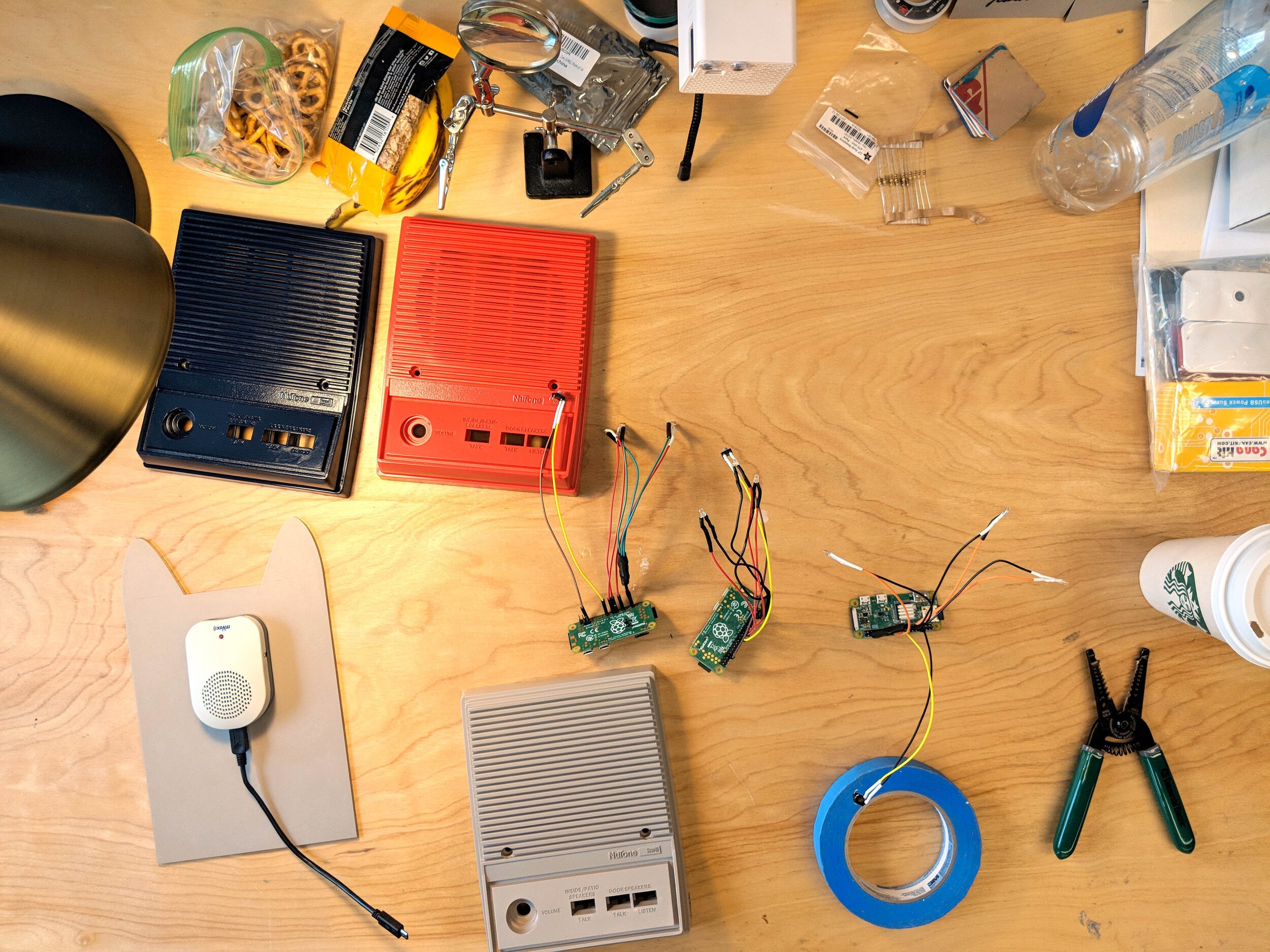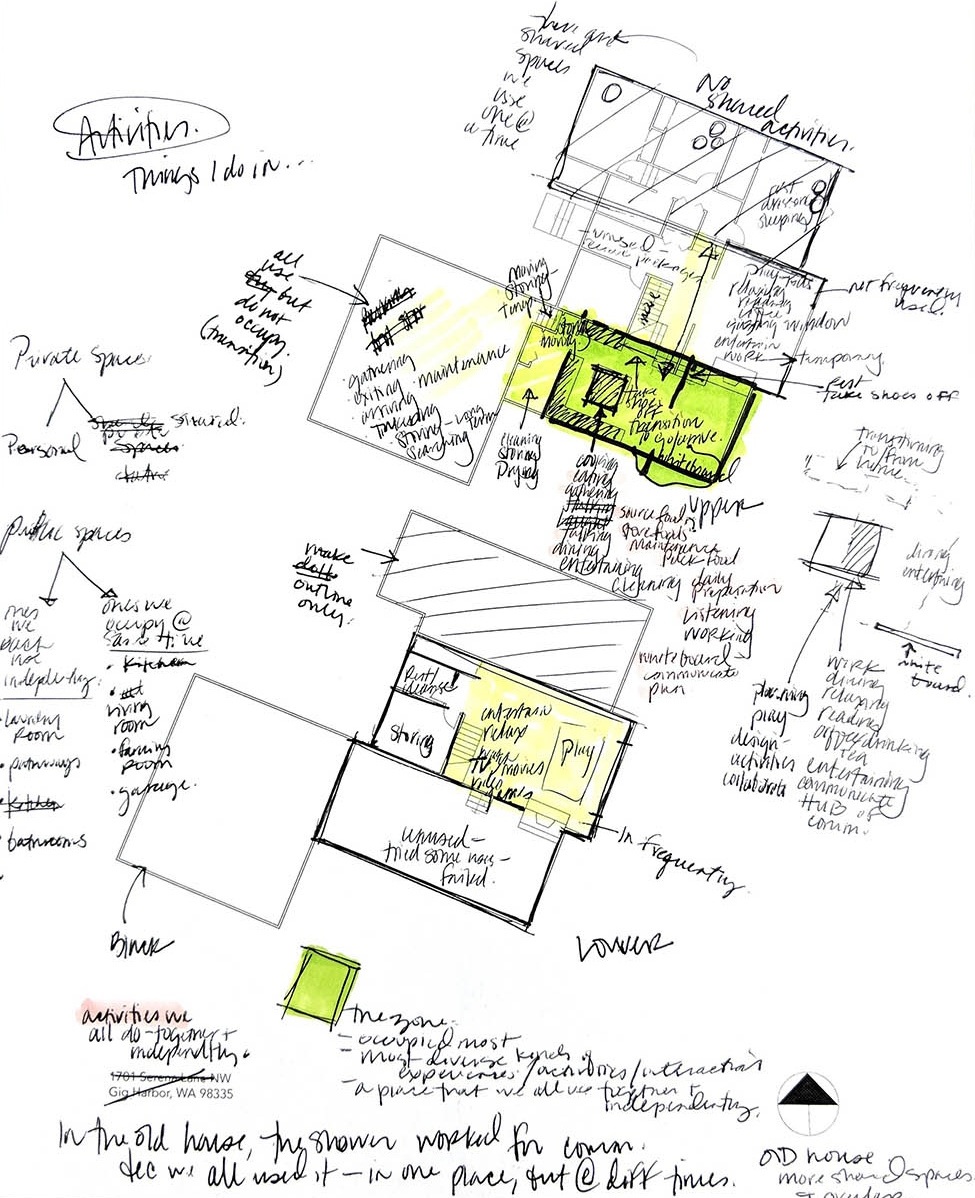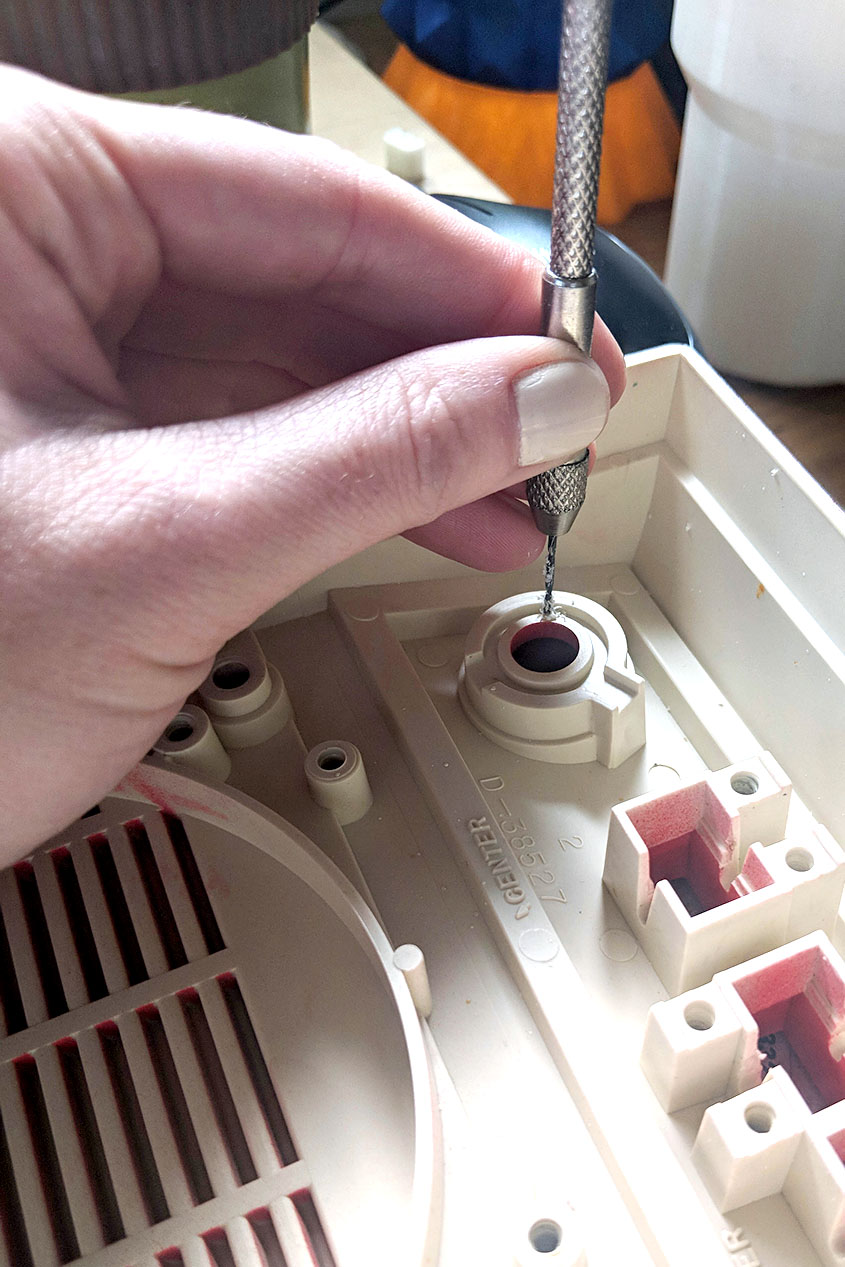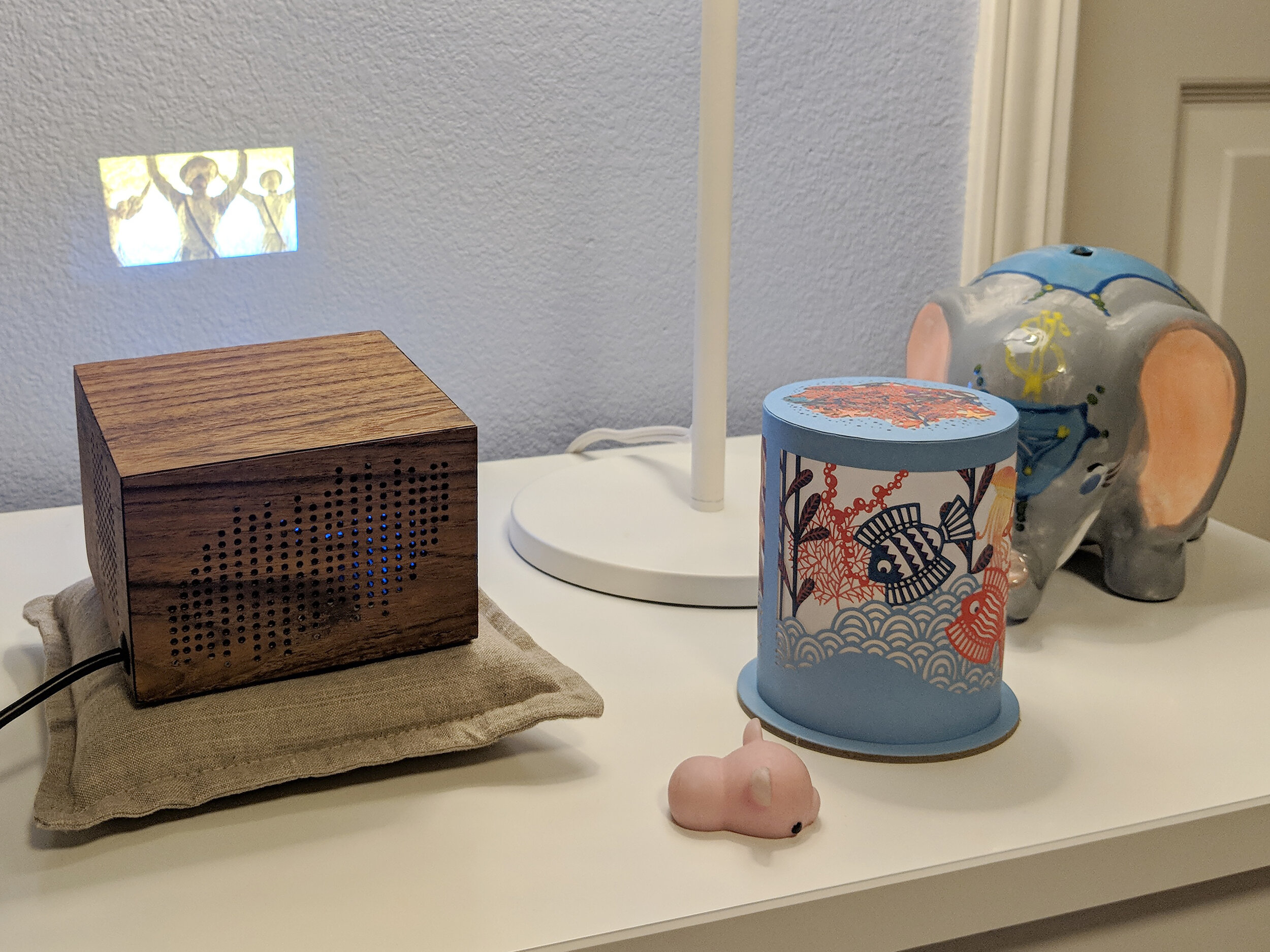Developing New Research Methods for Private Spaces












As computing, and therefore HCI research, is woven increasingly into our homes and the private moments of our lives—new methods are being developed to reach novel, authentic insights.
In this project I practiced Autobiographical Design, that is, I conducted research-through-design in my own home, with my patient and curious family of participants.
Conducting research in intimate spaces, like the home, requires ethical and methodological sensitivity and creativity.
I built two new ludic* IoT systems to live with over several months, documenting our interactions, evolutions, and iterative design process in detailed memos, photos, videos, interviews and journals. The project helped further develop Autobiographical Design as a productive research method and is explained in more detail in Revealing Tensions in Autobiographical Design in HCI.
*A ludic design approach introduces domestic technologies that encourage curiosity, reflection, and simple delights, rather than the traditional efficiency and productivity-driven IoT systems. The term Ludic Design was first introduced by the design researcher Bill Gaver.
Role: Researcher, Designer, Participant, Mother, Partner, Maker, Tech Support
Thesis Committee: Audrey Desjardins, PhD; A.J. Brush, PhD; & Michael Smith
[view thesis document, gallery installation]